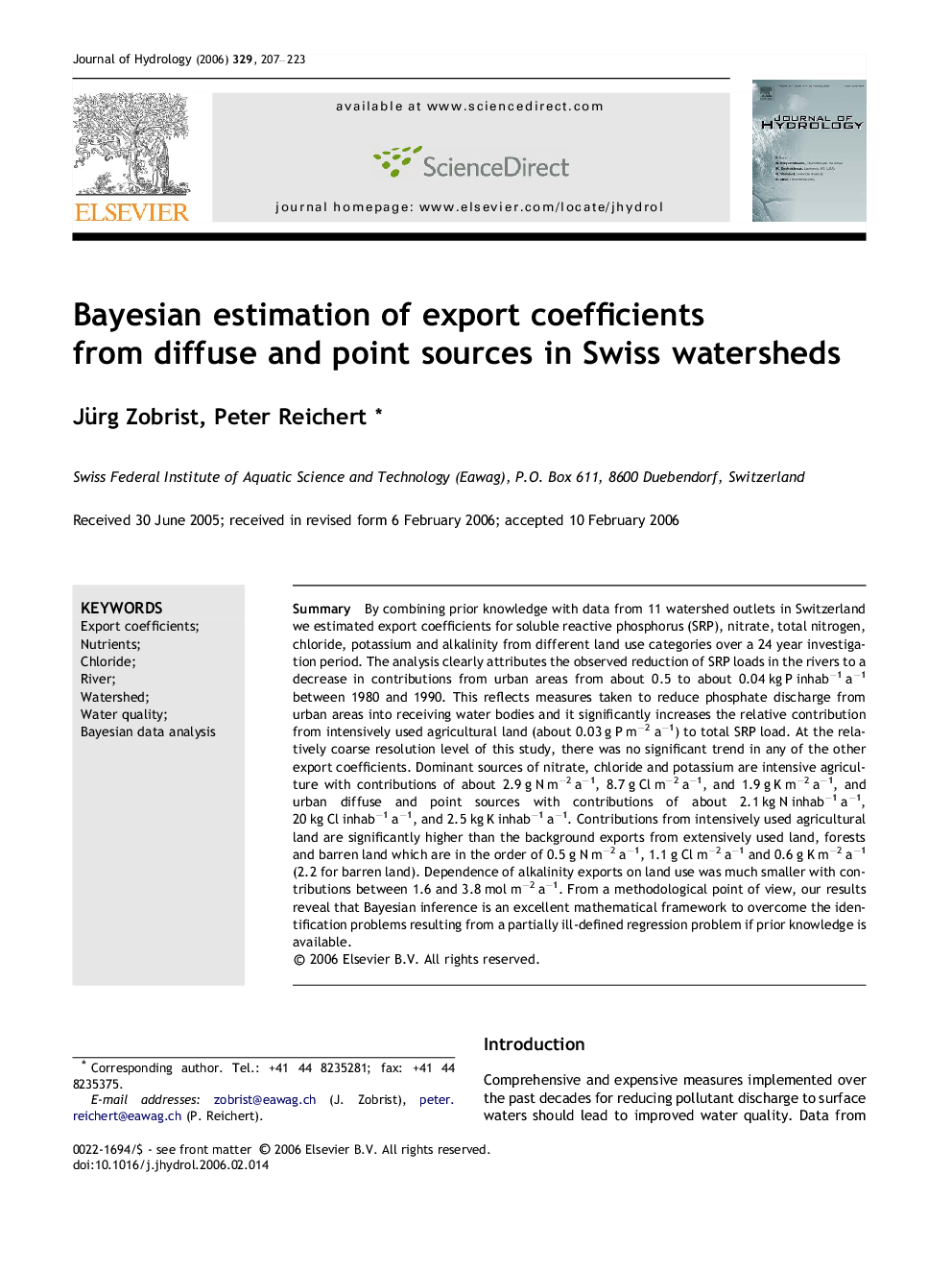| Article ID | Journal | Published Year | Pages | File Type |
|---|---|---|---|---|
| 4580234 | Journal of Hydrology | 2006 | 17 Pages |
SummaryBy combining prior knowledge with data from 11 watershed outlets in Switzerland we estimated export coefficients for soluble reactive phosphorus (SRP), nitrate, total nitrogen, chloride, potassium and alkalinity from different land use categories over a 24 year investigation period. The analysis clearly attributes the observed reduction of SRP loads in the rivers to a decrease in contributions from urban areas from about 0.5 to about 0.04 kg P inhab−1 a−1 between 1980 and 1990. This reflects measures taken to reduce phosphate discharge from urban areas into receiving water bodies and it significantly increases the relative contribution from intensively used agricultural land (about 0.03 g P m−2 a−1) to total SRP load. At the relatively coarse resolution level of this study, there was no significant trend in any of the other export coefficients. Dominant sources of nitrate, chloride and potassium are intensive agriculture with contributions of about 2.9 g N m−2 a−1, 8.7 g Cl m−2 a−1, and 1.9 g K m−2 a−1, and urban diffuse and point sources with contributions of about 2.1 kg N inhab−1 a−1, 20 kg Cl inhab−1 a−1, and 2.5 kg K inhab−1 a−1. Contributions from intensively used agricultural land are significantly higher than the background exports from extensively used land, forests and barren land which are in the order of 0.5 g N m−2 a−1, 1.1 g Cl m−2 a−1 and 0.6 g K m−2 a−1 (2.2 for barren land). Dependence of alkalinity exports on land use was much smaller with contributions between 1.6 and 3.8 mol m−2 a−1. From a methodological point of view, our results reveal that Bayesian inference is an excellent mathematical framework to overcome the identification problems resulting from a partially ill-defined regression problem if prior knowledge is available.
